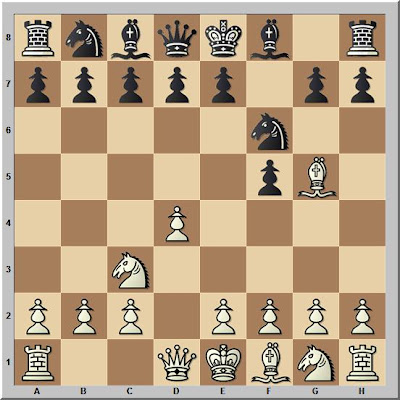In a match with Bernhard Horwitz, London 1846, Howard Staunton met the Dutch Defense with the offer of a pawn on move 2.
1.d4 f5 2.e4
This line came to be known as the Staunton Gambit, and was dangerous enough that Mikhail Botvinnik opined "If Black wishes to play the Dutch Defence, [1...e6] is almost obligatory."* The Oxford Companion to Chess (1992) calls the Staunton Gambit "vigorous" (393) in their brief entry, giving a short illustrative game.
Tartakower -- Mieses [A82]
Baden-Baden, 1925
1.d4 f5 2.e4 fxe4 3.Nc3 Nf6 4.g4 d5 5.g5 Ng8 6.f3 exf3 7.Qxf3 e6 8.Bd3 g6 9.Nge2 Qe7 10.Bf4 c6 11.Be5 Bg7 12.Qg3 Na6 13.0–0 Bd7 14.Bd6 Qd8 15.Qf4 1–0
The Encyclopedia of Chess Openings (ECO) has the codes A 82 and A 83 for games beginning 1.d4 f5 2.e4. In many lines, White recovers the pawn quickly. But not always. Sometimes White's kingside pawns are tossed to the wind. Braslav Rabar played a line with an aggressive h-pawn push in the Yugoslav Championship of 1945.
Rabar, Braslav - Kostic, Boris [A83]
YUG-ch Novi Sad (13), 1945
1.d4 f5 2.e4 fxe4 3.Nc3 Nf6 4.Bg5 g6 5.h4 d5 6.h5 Bg7 7.h6 Bf8 8.f3 Qd6 9.Qd2 exf3 10.gxf3
Another game by Rabar in the Yugoslav championship three years later reached this position, but his opponent played 10...c6 instead of the 10...a6 that he faced in 1945. This latter game is not in the ChessBase database, but is line 2 of ECO A 83.
I have not played 2.e4 against the Dutch, but have faced it at least 22 times in online blitz. I've lost slightly more than half of those games.
Transpositions
Although I have not played the Staunton Gambit from the White side, I prepared the Raphael Dutch (ECO A 80) as a weapon for the Spokane City Championship in 2008 when I faced an opponent who was rated more than 500 Elo above me. I managed a draw against Hiarcs 10 in my training for this match, and then earned a draw in the third game of the match. The Raphael has continued as an occasional weapon for me.
The usual line is 1.d4 f5 2.Nc3 Nf6 3.Bg5
Here 3...d5 is the most popular move with over 1500 games in my database, but 3...e6 often is played too. After 3...e6, White has the option of transposing into a line of the Staunton Gambit without the initial investment of a pawn.
My game against Jeremy Krasin in the Spokane City Championship Contenders yesterday took this route.
1.d4 f5 2.Nc3 Nf6 3.Bg5 e6 4.e4 fxe4 5.Nxe4 Be7 6.Bxf6 Bxf6 7.Qh5+
I had looked at some games with this position during a correspondence game, and decided to give it a go. It forces a Black player who is hoping to go into a Stonewall to alter his plans.
My game continued with a line given as a variation on ECO A 83, line 3.
7...g6 8.Qh6 Qe7 9.Nxf6 Qxf6 10.O-O-O Nc6 11.Nf3 d6
My opponent did not play 11...d6, however, but 11...Ne7. As near as I can tell from the ChessBase database, 11...Ne7 has been played seven times before. Most of these ended in a draw. In my game yesterday, White gained a lasting initiative and the Black king remained in the middle of the board until the end. According to ECO, after 11...d6, Black has achieved equality.
M. M. Botvinnik, One Hundred Selected Games, trans. Stephen Garry (New York, Dover, 1960), 72.
Invasion
4 hours ago

















No comments:
Post a Comment